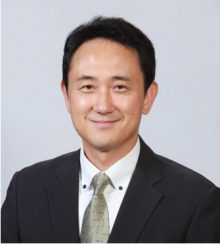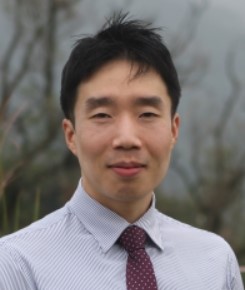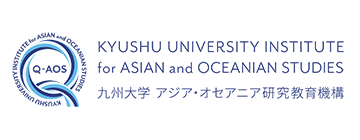Satellite Session 2:Environmental and Social Sustainability at Different Spatial Scales
Wednesday, September 9, 2020 *Online
| 2:00 pm-2:10 pm | Opening talk | Prof. Shigemi Kagawa |
| 2:10 pm-2:40 pm | Session I | Assoc. prof. Hidemichi Fujii |
| 2:40 pm-3:10 pm | Session I | Prof. Brian H.S. Kim |
| 3:10 pm-3:40 pm | Session I | Prof. Euijune Kim |
| 3:40 pm-4:00 pm | Break | |
| 4:00 pm-4:30 pm | Session II | Prof. Shigemi Kagawa |
| 4:30 pm-5:00 pm | Session II | Assoc. prof. Tae-Hyoung Tommy Gim |
| 5:00 pm-5:30 pm | Session II | Assoc. prof. Andrew Chapman |
| 5:30 pm-5:40 pm | Closing talk | Prof. Brian H.S. Kim |
Speakers

Prof. Shigemi Kagawa
Kyushu University
Faculty of Economics
Distinguished Professor
Email: kagawa@econ.kyushu-u.ac.jp
Toxic Chemical Emissions Footprint of NAFTA Nations
This study investigates major driving forces of changing toxic chemical emissions in the NAFTA region. In doing it, we firstly estimated toxic chemical emissions of the NAFTA member countries triggered by the global final demand of countries. Secondly, we develop a structural approach to investigate the following five driving forces of chemical emission intensity, technology, intra-regional trade, bilateral trade, and final demand behind the changes in the toxic chemical emissions. Thirdly, based on the structural approach, we propose a simplified sign test based on the structural decomposition analysis whether or not the bilateral trade structure led to an increase in the toxic chemical emissions of a specific country. The major findings of this study are summarized as follows. We find that Mexico-U.S. bilateral trade effect on the chemical pollutions in Mexico increased more than 5 times from 2006 to 2013 and its magnitude was significant. With a careful look on the bilateral trade effects of intermediate goods within the NAFTA region, we conclude that the structural change in the bilateral trade within the NAFTA area rapidly led Mexico to a chemical pollution haven.

Assoc. prof. Hidemichi Fujii
Kyushu University
Faculty of Economics
Associate Professor
Email: hidemichifujii@econ.kyushu-u.ac.jp
How Does Information and Communication Technology Capital Affect Productivity in the Energy Sector?
By focusing on a distributed energy system that has been widely diffused for efficient utilization of renewable energy generation in recent years, this paper investigates the relationship between productivity growth and information and communications technology capital in the energy sector. Information and communications technology is a key factor in operating distributed energy systems in a way that balances energy supply and demand in order to minimize energy loss and to enhance capacity utilization. The objective of this study is to clarify the determining factors that affect productivity growth, focusing on three different information and communications technologies: information technology capital, communication technology capital and software capital. Our estimation sample covers energy sectors in 14 countries from 2000 to 2014. The results show that information technology and software capital contribute to increasing material productivity and capital productivity in the energy sector, respectively. Meanwhile, communication technology capital negatively affects these two productivity indicators.

Prof. Brian H.S. Kim
Seoul National University
Agricultural Economics and Rural Development
Professor
Email: briankim66@snu.ac.kr
Regional Disparity of Medical Resources and Its Effect on Age-Standardized Mortality Rates in Korea
The progress in medical resources and technologies has played an important role in improving people’s health. Various indicators can be used to measure the health level of a country. The mortality rate is a clinical result of health and medical sectors that quantitatively displays the state or change in health levels. The effectiveness of medical resources can be quantitatively determined with the changes in mortality rate and can represent the health level of a region. In this study, 16 cities and provinces in Korea for the years from 2001 to 2014 are set as spatial and temporal scopes. Doctors, medical personnel, specialists, and number of operations are introduced as human medical resources. The number of hospital beds and number of medical facilities represent physical resources, while the high-end medical equipment represents technical advancements. The result from panel analyses indicated that all medical resources considered in this study reduces age-standardized mortality rate, with medical facilities having the greatest influence, followed by specialists, then by high-end medical equipment. These results can be interpreted to suggest that medical resources and regional economic characteristics compositely have reducing the effect on mortality rate.

Prof. Euijune Kim
Seoul National University
Agricultural Economics and Rural Development
Professor
Email: euijune@snu.ac.kr
Dynamic Impacts of Housing Demand and Supply Polies on Seoul Housing Market
This paper develops a framework for a dynamic economic analysis of fiscal and financial housing policies on the housing market in Korea. The framework integrates a Computable General Equilibrium (CGE) model with a housing market model. The housing model accounts for housing demand, investment, user costs and multiregional migration. The housing markets are disaggregated into four major regions; three regions (Seoul, Inchon and Gyeonggi) in Seoul Metropolitan Area and one rest of Korea to incorporate regional heterogeneity of the housing stocks. The policy simulations using the CGE model show that it would be more effective to control the interest rate and the capital gains tax rate together rather than to separately use only one option in order to reduce the inflation rate of Seoul housing price.

Assoc. prof. Tae-Hyoung Tommy Gim
Seoul National University
Environmental Planning
Associate Professor
Email: taehyoung.gim@snu.ac.kr
What Makes Seoul People Happy? PLS Regression of Five-year Data of the Seoul Survey
Comprising five happiness indicators [health-related happiness, financial happiness, relational happiness (considering relatives and friends), home-based life happiness, and social life happiness], overall happiness among residents in Seoul, Korea is investigated through partial least squares structural equation modeling, using five-year data of the Seoul Survey (2013–2017), representing a total of 228,103 persons. The empirical analysis finds that pride as a Seoul citizen, socioeconomics perception, survey years other than 2014, income, and non-elderliness have positive effects on the happiness in descending order of their magnitudes. The finding that the subjective socioeconomics outvalues the objective income implies the effectiveness of city marketing policies for higher happiness. Why the happiness was particularly low in 2014 may suggest the history effect of a national tragedy on the collapse of MV Sewol and economic and mental trauma afterward. Results on other variables confirm that happiness determinants have differing effects between Northeast Asia (e.g., Korea and Japan) and the West.

Assoc. prof. Andrew Chapman
Kyushu University
International Institute for Carbon Neutral Energy Research
Associate Professor
Email: chapman@i2cner.kyushu-u.ac.jp
Renewable Energy Transitions and Social Equity: Evaluating the Equitable Transition
This research examines the societal impacts of varying energy policy approaches and the progress of the energy transition toward a renewable energy-based regime internationally. Using indicators relevant to energy policy and the energy transition, five critical social equity impacts of environmental improvement, health, employment, participation and energy cost are investigated from the viewpoint of an ‘equitable’ transition. We identify the quantitative social equity impacts of the shift toward renewable energy-based electricity from 1990 to 2015, for 99 nations with differing development levels, energy resources and policies. We find that increased levels of ‘new’ renewable energy deployment generally improve social equity for most nations. Further, richer nations enjoy better social equity outcomes as a result of deploying renewable energy and, regionally speaking, Northern European nations achieve superior results, while African nations lose out both for the transition and social equity outcomes overall. Our results are particularly important for developing nations, who face the ‘development curse’, whereby electricity needs are often met by fossil fuels prior to the large-scale penetration of renewables – engendering negative social equity outcomes. The holistic evaluation of energy transitions and social equity outcomes enables proactive policy development, contributing to the realization of an equitable energy transition.












